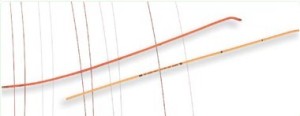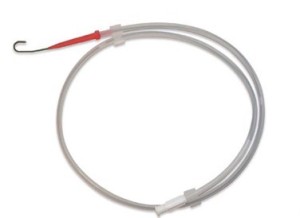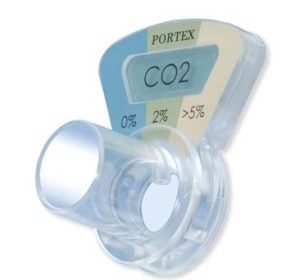Changing a tube
Tracheostomy tubes may be changed electively or require replacement under emergency conditions due to tube blockage, accidental decannulation or displacement.
Elective changes
Recommendations for the frequency of changing tracheostomy tubes are unsupported by the literature. A European Economic Community Directive1 states that surgically invasive devices intended for short-term use are in Class IIa and therefore normally intended for continuous use for not more than 30 days. In practice the frequency of tracheostomy tube change should be assessed on an individual patient basis taking into account:
For the first change:
The procedure used to form the stoma (Surgical stoma not before 72 hours and percutaneous ideally 7-10 days2)
For subsequent changes:
- The design of the tracheostomy tube – It is thought to be good practice to change a single lumen tracheostomy every 7-14 days to prevent tube blockage with secretions
- The purpose of the tracheostomy i.e. downsizing for weaning or fenestrated tube for speech
- Patient discomfort and trauma to the stoma site
When planning a tracheostomy tube change always consider:
- Is this the best time to be doing this?
- Am I the best person to do this?
- Is the patient adequately/appropriately prepared?
- Have I got all the essential/appropriate equipment?
- Is there adequate support?
Who should change the tube?
The person changing the tube is chosen according to the risk to the airway. The highest risk is the first change in a newly formed stoma or where there is airway compromise. In these situations it is recommended that the individual either possesses advanced airway skills or has immediate access to someone with those skills and has notified that person immediately prior to the tracheostomy tube change, in case of an emergency arising. Any tracheostomy change should be undertaken by a practitioner who has demonstrated appropriate competence (see Appendix 3).
The procedure for changing a tube
The type of tracheostomy tube used should be tailored to the patients’ condition and will depend on various factors such as length of weaning time, original reason for tracheotomy and type of secretions.
This is a two person technique, with one person supporting the tube and the patient and the other performing the change. In patients who are at risk of aspiration it is recommended that any enteral feed be stopped 3-4 hours prior to the procedure and the enteral tube aspirated immediately prior to the procedure. The procedure used for changing any tracheostomy tube will depend on the circumstances of that change. There are two commonly used methods:
- Guided exchange using a tube exchange device -usually required for early changes and for patients with a high risk of airway loss
- Blind exchange using an obturator – for patients with formed stomas and a low risk of airway loss
Equipment
- Dressing pack
- Suture cutter
- Appropriately sized tracheostomy tube and one a size smaller
- Tracheostomy tube holder
- 10ml syringe for cuffed tubes
- Water-soluble lubricant
- Sterile normal saline
- Pre-cut slim line key hole dressing such as Metalline™ or if large secretions use a more absorbent dressing such as Allevyn™ or Lyofoam™
- Gloves, apron and protective eye wear
- Tracheal dilators
- Functioning suction unit and appropriate sized suction catheters
- Stethoscope
- Airway exchange catheter
- Resuscitation equipment
- Microbiological swab

Portex® Tracheal Tube Inducer and Guide

Airway Exchange Guidewire
Blind exchange using an obturator
- Check emergency equipment
- Explain procedure to patient and gain patient consent
- Position patient in semi-recumbent position
- Where required pre-oxygenate
- Ensure assistant is clear regarding what is expected of them
- Check and lubricate tube
- Insert obturator
- Ask assistant to suction if required, remove old dressing, inner cannula and tapes and support tube
- (Deflate cuff with suction applied)
- Remove tube on expiration
- If patient not oxygen dependent and stoma well formed, observe site, swab if site looks infected and clean stoma
- Insert tube on expiration, remove obturator (inflate cuff)
- Check for airflow through tube. Identify presence of CO2 using a CO2 detector
- Ask assistant to support the new tube
- Dress and apply holder
- Replace inner cannula where used
- Check patient is stable (and cuff pressure)
- Document procedure in the case notes using printed label where available and check patient again. If using a fenestrated tube, place spare inner cannula in emergency pack and clearly label tube

Portex® CO2 detector
Guided exchange using an airway exchange device
- Check emergency equipment
- Explain procedure to patient and gain patient consent
- Position patient in semi-recumbent position
- Where required pre-oxygenate
- Ensure assistant is clear regarding what is expected of them
- Check and lubricate tube
- Ask assistant to suction if required, remove old dressing, inner cannula and tapes and support the tube
- Insert exchange device to length of tube
- Ask assistant to deflate the cuff
- Remove old tube over exchange device
- Insert new tube over exchange device
- Check for airflow through tube. Inflate cuff.
- Remove exchange device. Identify presence of CO2 using a CO2 detector
- Observe site, swab if required and clean while assistant support the tube
- Dress and apply holder
- Replace inner cannula
- Check patient is stable (and cuff pressure)
- Document procedure in the case notes using printed label where available and check patient again. If using a fenestrated tube, place spare inner cannula in emergency pack and clearly label tube
If unable to re-insert tube successfully or the patient become compromised
- Call the on-call anaesthetist/ENT/Resus team immediately and as appropriate to the situation, to assist and/or orally intubate where appropriate
- Maintain oxygenation via stoma and nose and mouth with a facemask
- Use tracheal dilator and attempt to re-insert tube
- Reposition patients neck and attempt to re-insert tube
- Consider using a smaller size tube
References
- EEC Directive (1993) Class IIA, Rule 7. Council directive concerning medical devices, 93/42 EEC
- Intensive Care Society (2008) Standards for the care of adult patients with a temporary tracheostomy

